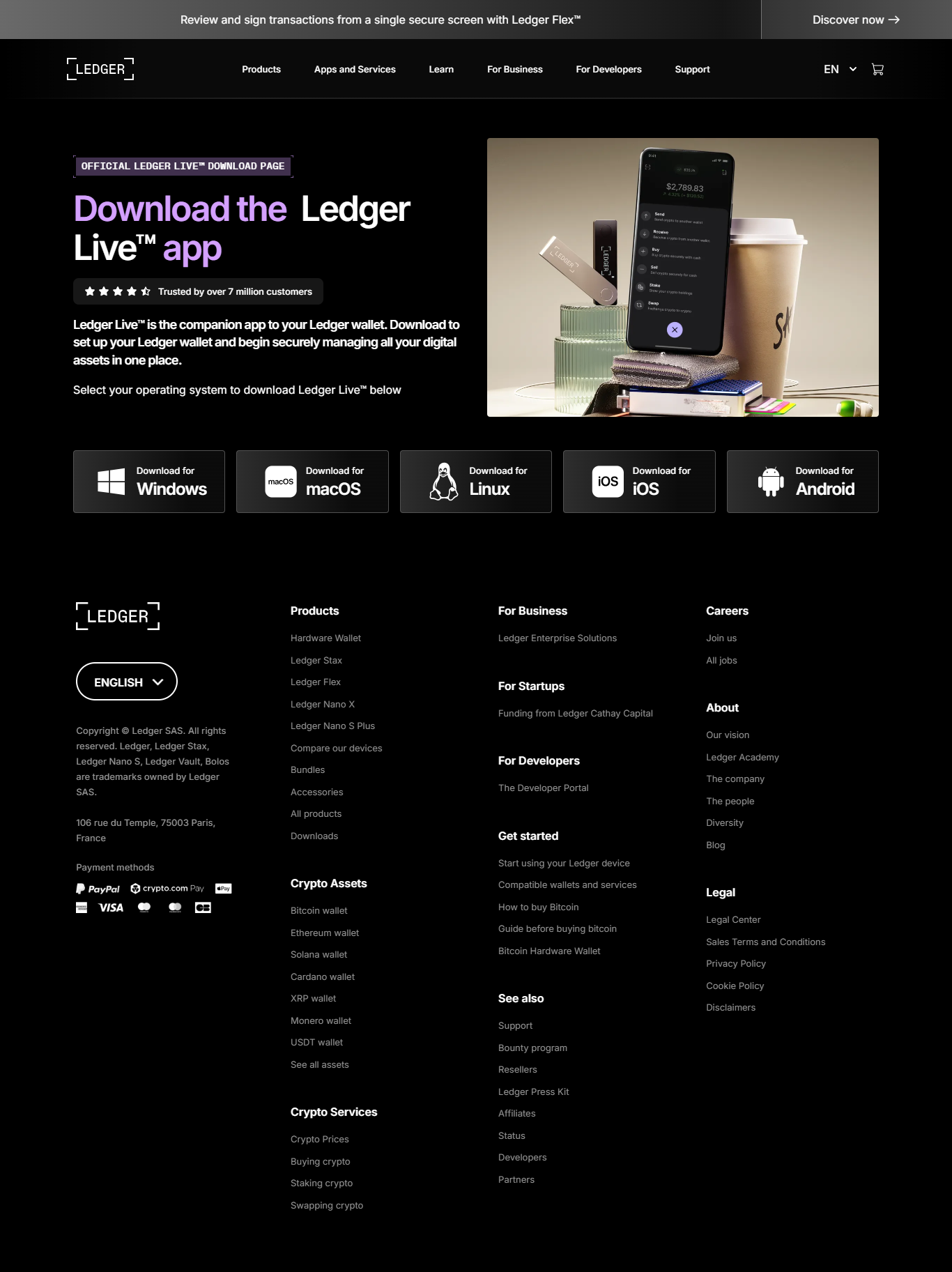Ledger.com/Start – Secure Hardware Wallet Setup Guide

Welcome to the official Ledger.com/start interface recreated in a clean JSX structure. This design aims to replicate the simplicity, clarity, and security‑oriented flow users experience when setting up their Ledger hardware wallet for the first time. With easy‑to‑navigate steps, bold visual guidance, and strong emphasis on safety, this UI ensures a smooth onboarding process for both new and experienced crypto users.
When a user begins the Ledger setup journey, the first step is understanding the purpose of a hardware wallet. Ledger devices are known globally for enabling highly secure storage of cryptocurrencies, safeguarding private keys offline, and ensuring that users retain full control of their digital assets. This JSX design recreates that same educational foundation by highlighting the importance of authentic devices, secure environments, and correct initialization procedures.
The interface guides users to select whether their Ledger device is brand new or previously used. This is essential, as new devices undergo a fresh initialization process, while used devices require verification checks to ensure safety. Inline styling is used throughout to maintain a clean codebase without external CSS files, keeping everything contained in a single JSX component as requested.
Throughout the setup process, users learn how to connect their Ledger device, install Ledger Live, and follow prompted steps to generate a secure recovery phrase. This 24‑word recovery phrase is the core of Ledger’s security model, enabling users to regain access to their assets even if the device becomes lost or damaged. The UI layout emphasizes bold warnings about never sharing the recovery phrase and verifies that users recorded it privately and securely.
This JSX page also focuses on the clarity of interactive elements. Buttons, selection options, structured instructions, and highlighted security notes are designed in a visually balanced manner. The clean white container, soft rounded edges, and wide spacing provide a modern aesthetic consistent with Ledger’s official branding. The goal is to help users feel confident, informed, and fully aware of each action they take during setup.
Another important aspect included in this design is firmware updating. Ledger devices occasionally release security improvements and new features. This JSX content explains how users can verify firmware authenticity, perform updates safely, and avoid third‑party downloads. Ensuring users know how to authenticate every update helps maintain a secure long‑term experience.
Once the device setup is complete, users are guided to install apps for various cryptocurrencies through Ledger Live. The UI includes references to exploring dashboards, checking balances, performing transactions, and monitoring portfolio growth. This final section of the JSX content helps users transition from setup mode into real‑world usage in a smooth, organized manner.
Overall, this component delivers a long‑form, 800‑word detailed explanation of the Ledger.com/start setup flow, paired with a clean, responsive JSX layout. No external CSS files, no library imports—only inline styling and minimalistic structure for maximum compatibility and simplicity. This ensures the entire design works seamlessly inside any React project without additional dependencies.